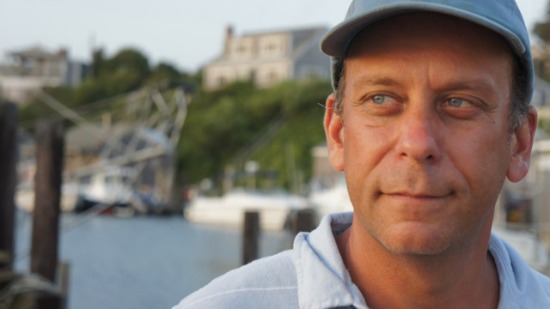One avenue of sustainability receiving increasing amounts of attention? Our oceans, and the fishing practices that have wreaked a real havoc on their ecosystems and biodiversity. Paul Greenberg, frequent Edible contributor and author of the best-selling Four Fish and the forthcoming American Catch, will be leading a discussion at Edible Institute on just this: How can small-scale fishers help to save East Coast seafood?
We talked to Paul about Edible Institute, where he thinks the food world is headed and what’s “good for local communities as well as the local waters.”
Edible Institute is happening this weekend — May 10-11 — and we couldn’t be more excited. There’s still time to claim a place in the audience so that you can hear the likes of Paul — as well as Danielle Nierenberg, Danielle Gould, Mark Bittman, Anna Lappé, Jane Black and a whole host of others who care about food and drink as much as you do.
Edible Brooklyn: Why are you joining us at Edible Institute?
Paul Greenberg: I’m excited to talk about the really weird disconnect we have with the American seafood supply. Something like 90 to 95 percent of our seafood is imported, but one third of the seafood we catch is sent abroad…. I’m excited to talk about the disconnect between the eaters and the producers of seafood in this country.
Americans don’t really value seafood very highly…. Global consumption is 30 pounds per capita; for Americans, it’s 15 pounds per capita. We have kind of a sad reliance on neutral-tasting seafood that doesn’t really have any flavor, so we rely on the largely farmed fish that produce that kind of flavor — like tilapia.
EB: What speaker or session of the #Edible2014 Lineup looks particularly interesting to you?
PG: We have Sean Barrett from Dock to Dish. He’s trying to put together restaurants with fishermen, to cut out the middleman. Sean tries to be the sole intermediary between the fisherman and the client. There’s Bren Smith of the Thimble Island Oyster Company. He’s growing mussels and edible seaweeds. If we can encourage a taste for seaweeds here, it could be good for local communities as well as the local waters.
EB: Tell us about a personal food-related project you’re working on, outside of your publicized work.
PG: I have a large terrace, and every year I build a garden. In addition to bringing in produce, I’ve also been able to grow grapes and make wine. Last year I made one bottle of wine; this year I’m hoping for two. I call it Château Nul — nul after how much the vineyard produces.
I’d love to be able to do aquaponics, too. People who have real yards have chickens. I don’t really have real yard, but I like the idea of being able to take my food waste and feed it to the fish. The fish that works really well in aquaponics is tilapia, but it’s not a native fish. What would work is largemouth black bass or sunfish — not my ideal eating fish, but sort of the American equivalent of tilapia.
EB: Where is the food world headed?
PG: Unfortunately, I think it’s headed in the direction of the economy. A smaller portion of people are going to receive high-quality food, and a larger amount of people are going to receive non-organic, adulterated, lower-quality food.
There’s a direct correlation between seafood consumption, education and wealth. The more educated you are, the wealthier you are and the more seafood you eat — and the healthier you are. But I’d like to see people of all economic levels have seafood as a key part of their diet, and to see coastal communities engaged as much as possible.
EB: What role do those coastal communities play?
PG: In the pioneer past of this country, fishermen tended to be takers of things rather than protectors of the environment, but in the past ten years, this has started to shift. With the passage of the Sustainable Seafood Act, people are seeing that this resource is limited.
The real estate pressure on the coast — salt marshes are responsible for about 70 percent of our domestic seafood production. If you flood those marshes and coastal areas with waste, you’re going to directly influence the abundance and quality of seafood. It’s a mutual self-interest kind of thing. If we can get fishing communities to defend their rights and their resources, that’s the best way we have to defend our American seafood.
EB: Tell us a few of your favorite places to go in NY.
PG: I live not far from Chinatown, and my favorite place to go is Fry Dumplings. That’s what they make, and that’s what they sell. They make them right there in front of you. The woman there doesn’t speak too much English, but I consider her a friend. The have pork and vegetable, and we buy them 30-packs. That’s what in my son’s school lunch most days. He’s about 80 percent dumpling.
Feature photo courtesy of Paul Greenberg




